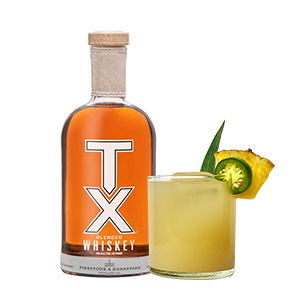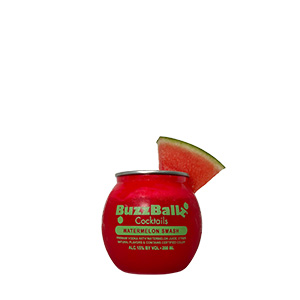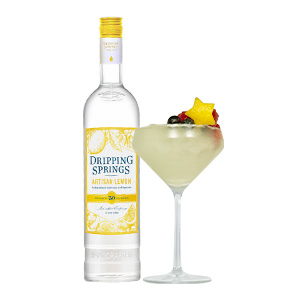
Three cheers for IPA— hip, hip hooray! Why the celebration? Since IPA’s boom in popularity, and even have their own holiday #IPAday, brewers have evolved the style into many sub-genres. Much like how rock musicians have taken inspiration from their predecessors and added their own creative interpretations, so have craft brewers done the same with IPA.
Let’s explore all the tasty sub-genres that have been developed, and give you some recommendations that you can sip while you celebrate #IPAday.
West Coast IPA
The West Coast IPA takes its inspiration from British IPAs and American hops. It’s use of bold American (cascade, citra, Chinook) – give it a huge citrus aroma, verging on pine and with a slight dankness. These beers are usually a little less dry because they often use crystal malt, but significantly more bitter, sometimes topping 80 IBUs (International bittering units) which is about as much as the human palate can sense.
West Coast IPA Examples
Green Flash, West Coast IPA
Stone Brewing IPA
East Coast IPA
The East Coast IPA is a somewhat new style, taking inspiration from the West Coast IPA with one difference – yeast. You see, California brewers use clean, almost flavorless yeasts that allow the hop aromas and flavors to come forward. Yet East Coast brewers are using complicated British yeasts which produce lots of smells and aromas as they ferment the sugar – usually stone fruit, banana and tropical notes – which the brewers use to top up the intense hop aromas. With this flavor boost, East coast brewers can use fewer hops so the beers are less bitter, and they also leave the beer cloudy to give it a hazy appeal and a fluffy texture.
East Coast IPA Examples
Dogfish Head 60 Minute IPA
NXNW Zombie Dragon East Coast IPA
Belgian IPA
Inspired by the American India Pale Ale (IPA) and Double IPA, more Belgian brewers are brewing these hoppy pale colored ales for the US market (like Chouffe & Urthel), and American brewers have jumped on the bandwagon as well. Various malts are used, but Belgian IPAs are finished with Belgian yeast strains (bottle-conditioned) and the hops employed tend to be American. Overall, the Belgian IPA contains a cleaner bitterness compared to its American cousin, and a pronounced dry edge.
Belgian IPA Examples
Clown Shoes Tramp Stamp Belgian IPA
Troubador Magma Special Edition
Session IPA
Session IPAs are the rage right now. They combine the full flavor of an IPA with the low gravity of a session beer. These IPAs low alcohol content allows you to enjoy several and not feel the adverse effects. Sometimes the lines can blur between between pale ale and IPA, but the style is taking hold and looking for new faithful followers.
Session IPA Examples
Karbach, Weekend Warrior Session IPA
Golden Road, Wolf Pup Session IPA
Imperial or Double IPA
The Imperial or Double IPA does just what the name indicates—doubles up on the hop flavor and bitterness. But not only that, they come around somewhere in the 7.6%-10.6% range, (compare that to the typical IPA ABV of 6.3%-7.5%).
Imperial or Double IPA Examples
Independence Highboy Double IPA
Bells’ Hopsolution Double IPA
Black IPA
Technically, the style has already been named and defined by the Brewers Association as the American-style black ale. It is essentially an IPA brewed with the addition of dark specialty malts, resulting in a dark brown to black IPA with a hint of roasted malt flavor. For several years now, the Great American Beer Festival has judged black IPAs. They are hoppy dark beers that join stout roastiness with IPA hoppiness. The black IPA sub-category has been getting a lot of buzz these days. In the spirit of #IPAday, why not expand your horizons with this style-bending Pacific Northwest favorite?
Black IPA Examples
21st Amendment Brewery, Back In Black
Clown Shoes, Hoppy Feet Black IPA
White IPA
The white IPA is essentially a marriage of two distinct beer styles; the American IPA with its high hop character and the wheat-based Belgian Wit with its refreshing and spicy presence.
Light, bready malt flavors with moderate to high fruity esters. The white IPA is known to have hints of grapefruit, or oranges, as well as stone fruit such as apricot. Clove and other spicy flavors are possible because of the Belgian yeast. Hop bitterness is high with hop flavors in the med-high to med-low range. Coriander and orange peel flavors are also acceptable. Finish is drying and refreshing.
White IPA Examples
Blue Moon White IPA
Brown IPA
Retaining the dryish finish and lean body that makes IPAs so drinkable, a Brown IPA is a slightly more flavorful and malty than an American IPA without being too sweet or heavy.
Brown IPA Examples
Dogfish Head Indian Brown Ale
Heavy Seas Beer Brown IPA
Red IPA
As of 2015, Red IPA is one of the newer styles, but it’s certainly nothing new to beer geeks. Previously, Red IPAs were referred to as California/West Coast Red ales, Northwest IPAs, or simply as IPAs, but the distinctions of this style are useful to note in order to differentiate it from similar styles. (American Amber in particular). Like most IPAs, it’s characterized by a pretty high BU:GU ratio (especially this recipe!), more malt character than a traditional American IPA and high levels of hops aroma and flavor. Overall, Red IPA is a riot of hops in a surprisingly drinkable beer that let’s you have a few in one session, not unlike a session ale.
Red IPA Examples
Founder’s Dankwood Barrel Aged Red IPA
Avery Hog Heaven, Imperial Red IPA
Rye IPA
Rye India pale ale uses malted rye grains in the mash ingredients, which adds a tangy or spicy character to the beer. This category has begun to pick up more momentum here in the US, but it’s been a thing in traditional brewing grain for many Eastern European countries for years.
Rye IPA Examples
Harpoon Rye IPA
Guadalupe Brewing Rye IPA
Fruit IPA
To the IPA purists, this is a controversial category. Many serious beer drinkers tend to prefer IPAs hoppy and fruit-free. After all, the sweetness of fruit seems to contradict a typical IPAs distinct bitter flavor profile. But others welcome fruit infused beer to the IPA family with open arms. Sometimes the right fruit, in moderation can really add an outstanding flavor nuance to the right IPA. (ie; Grapefruit IPAs) As they say, hop-osites attract.
Fruit IPA Examples
Ballast Point Grapefruit Sculpin
Oskar Blue’s Fugli Fruit IPA
For more IPA recommendations, just ask the experts at your local Spec’s, Wines, Spirits and Finer Foods.




